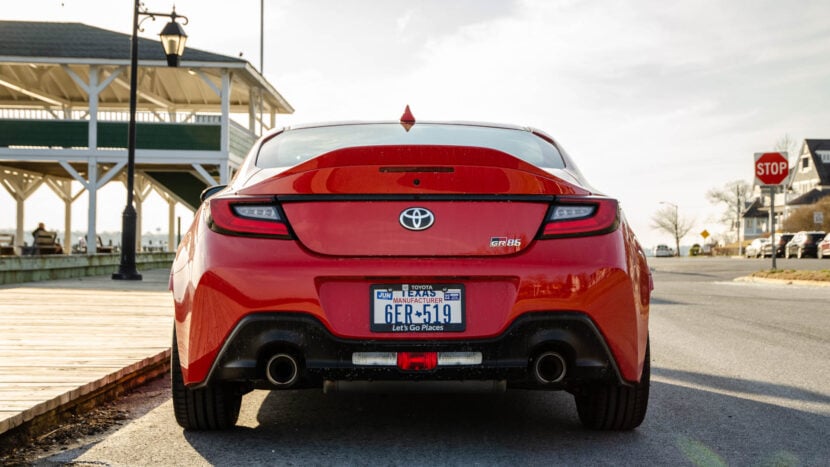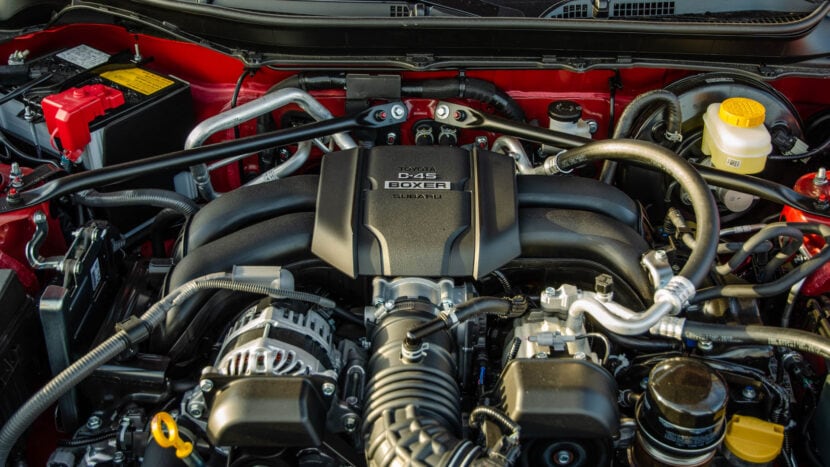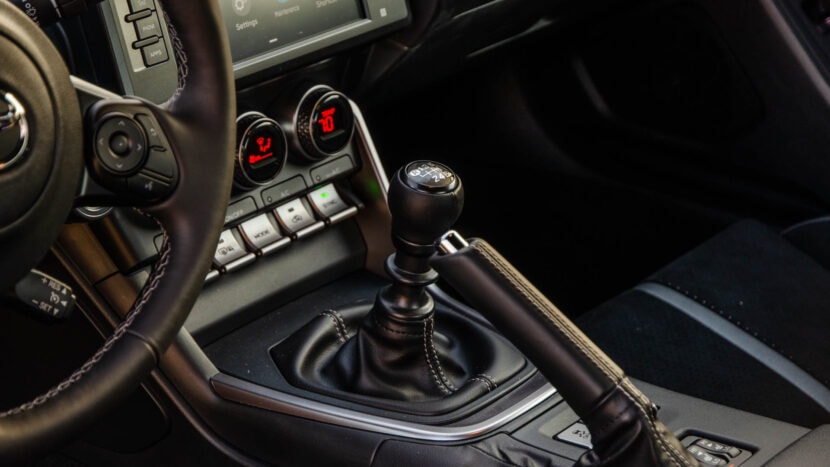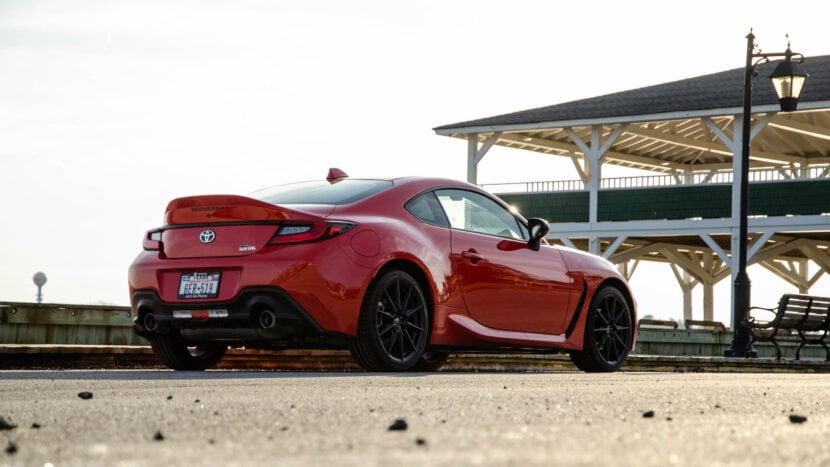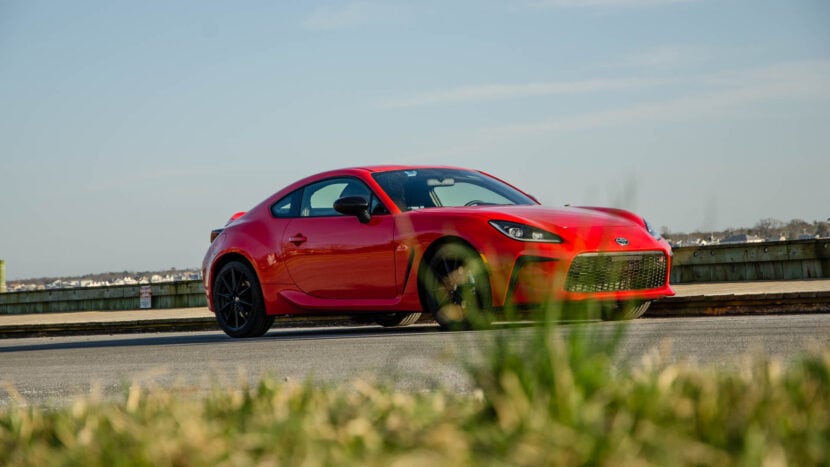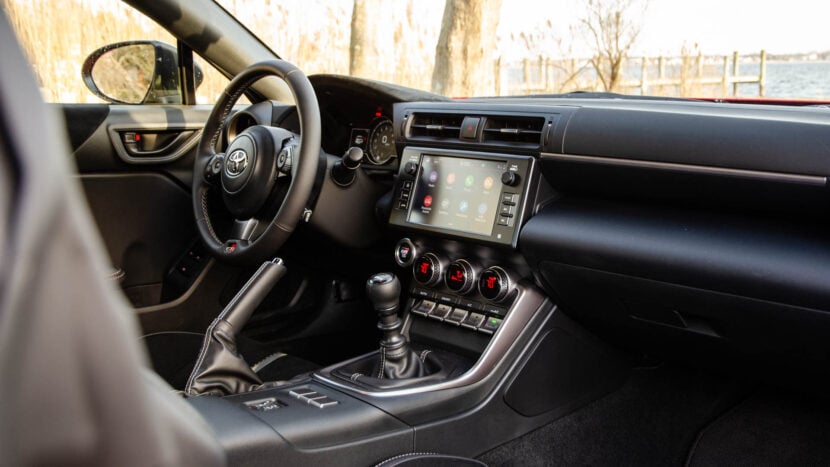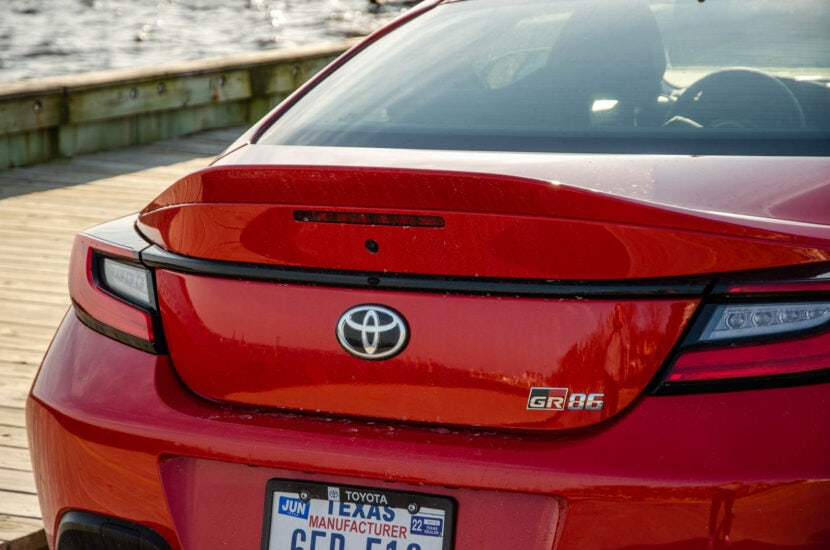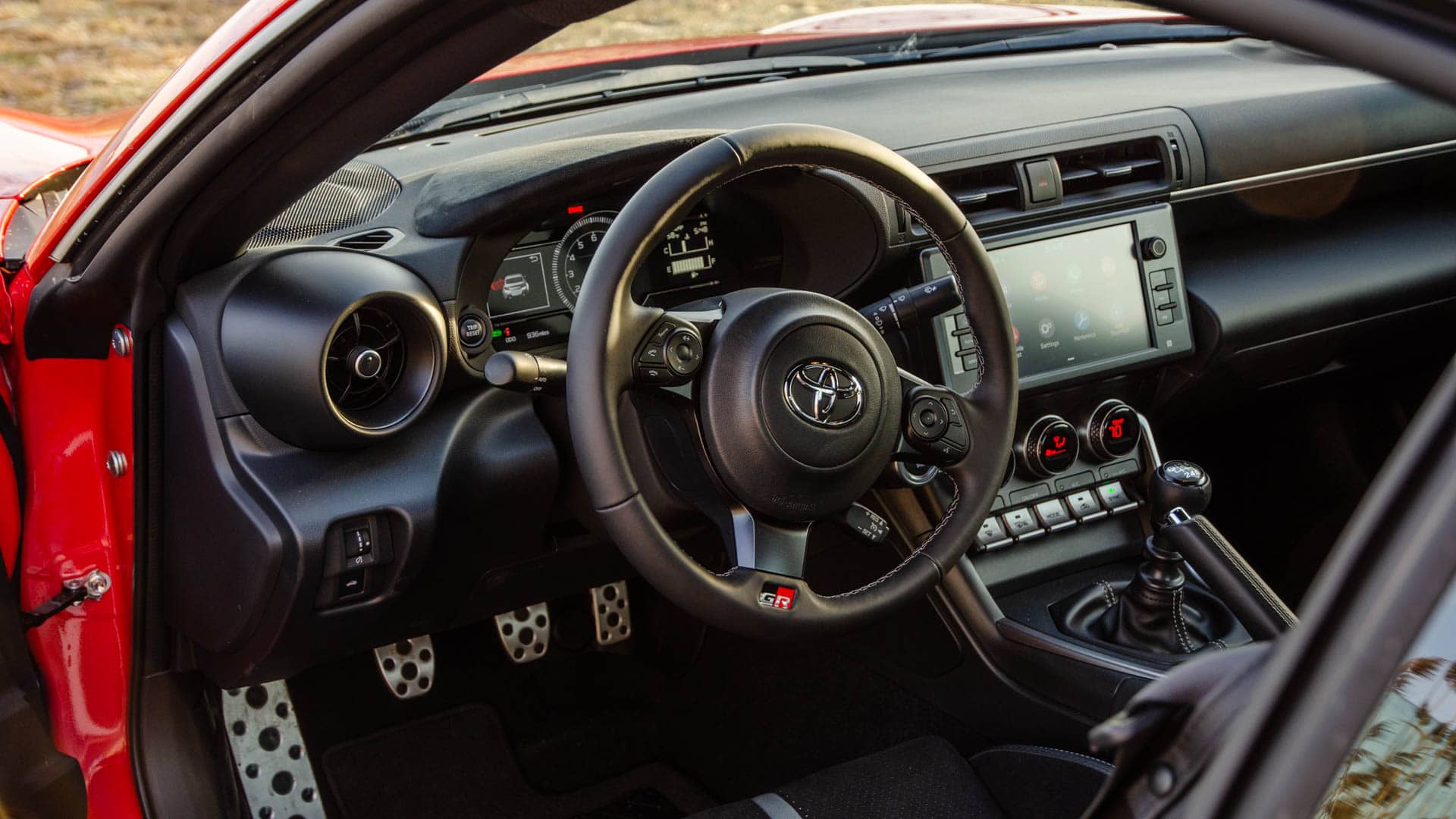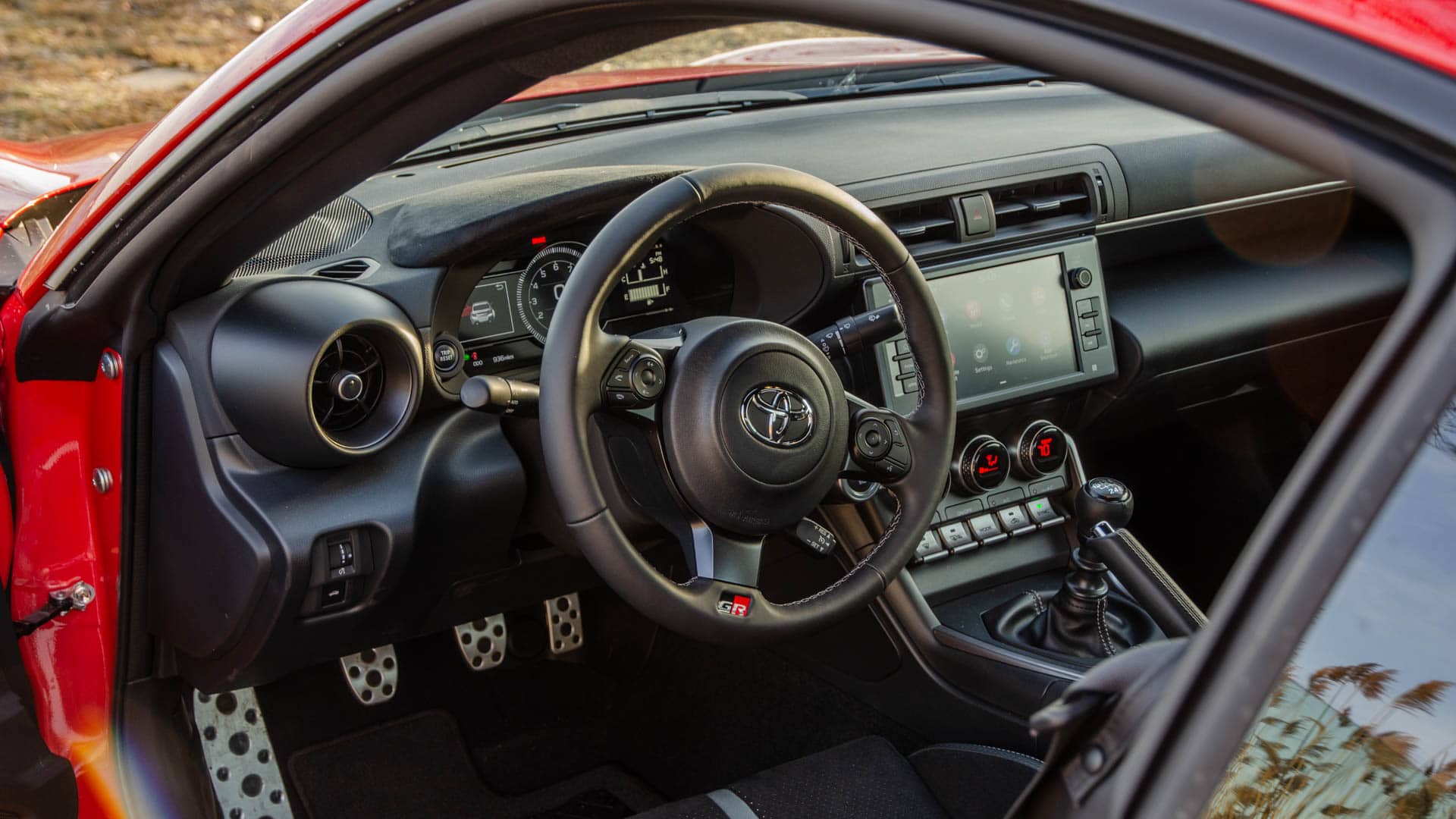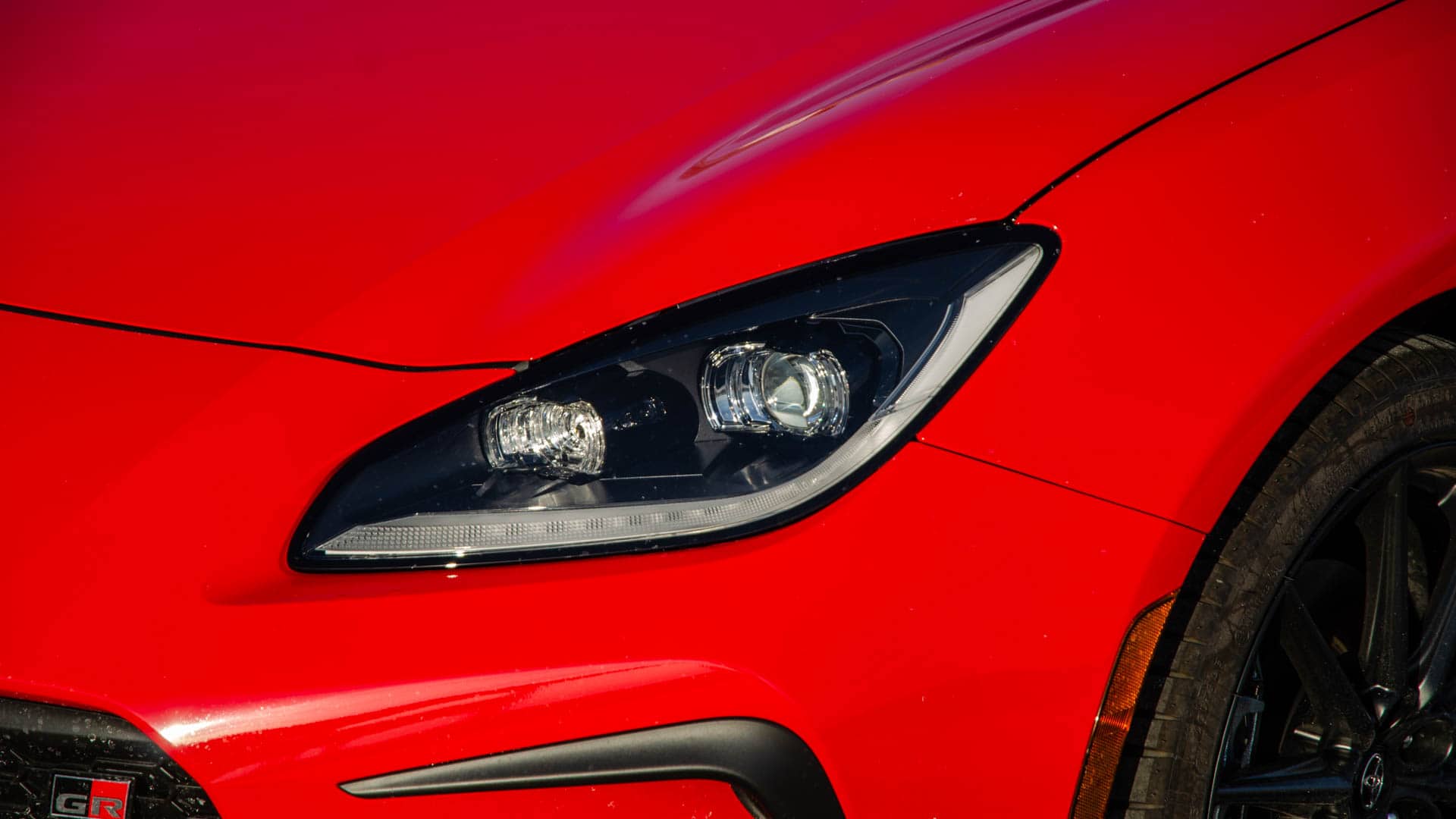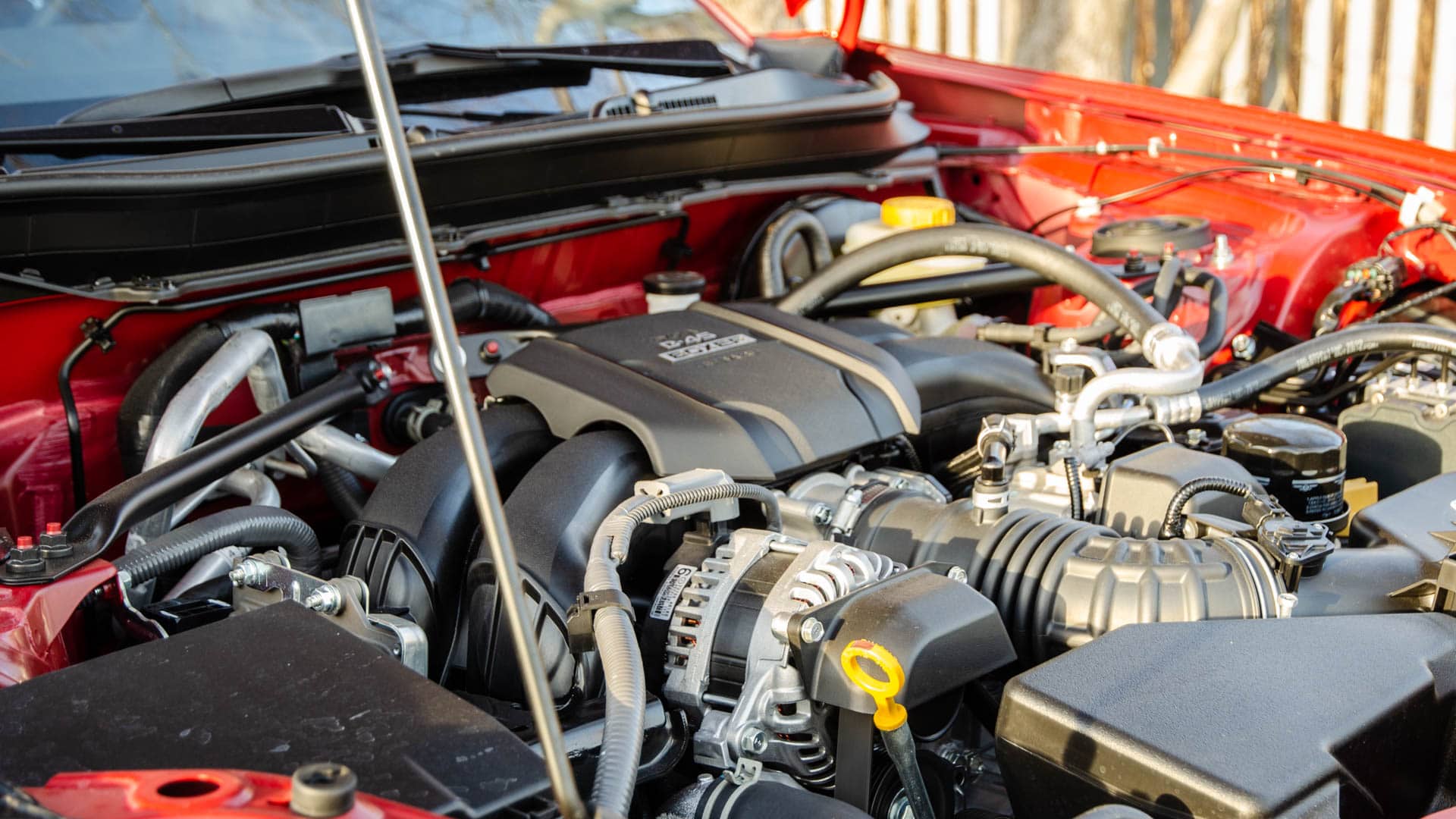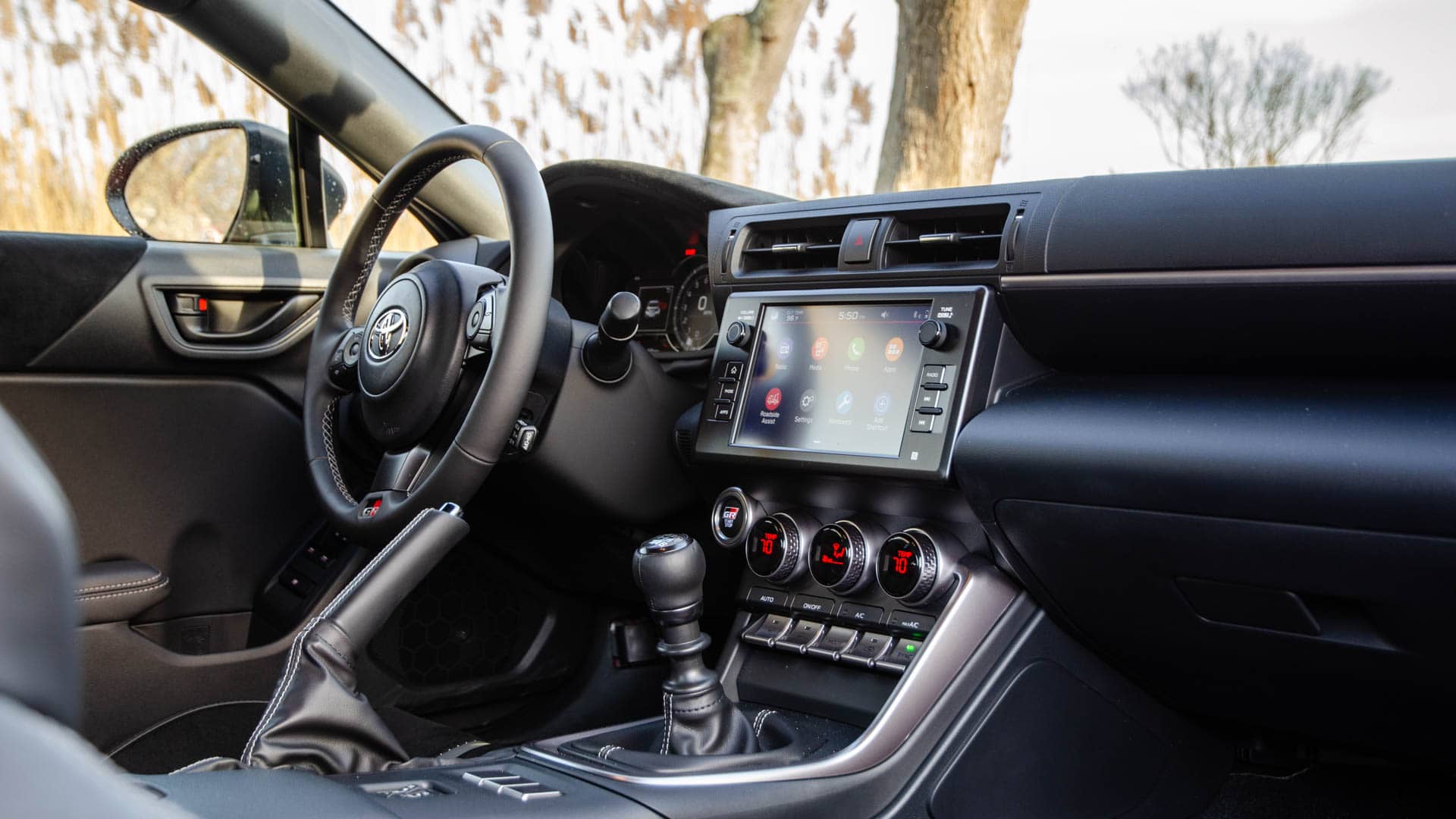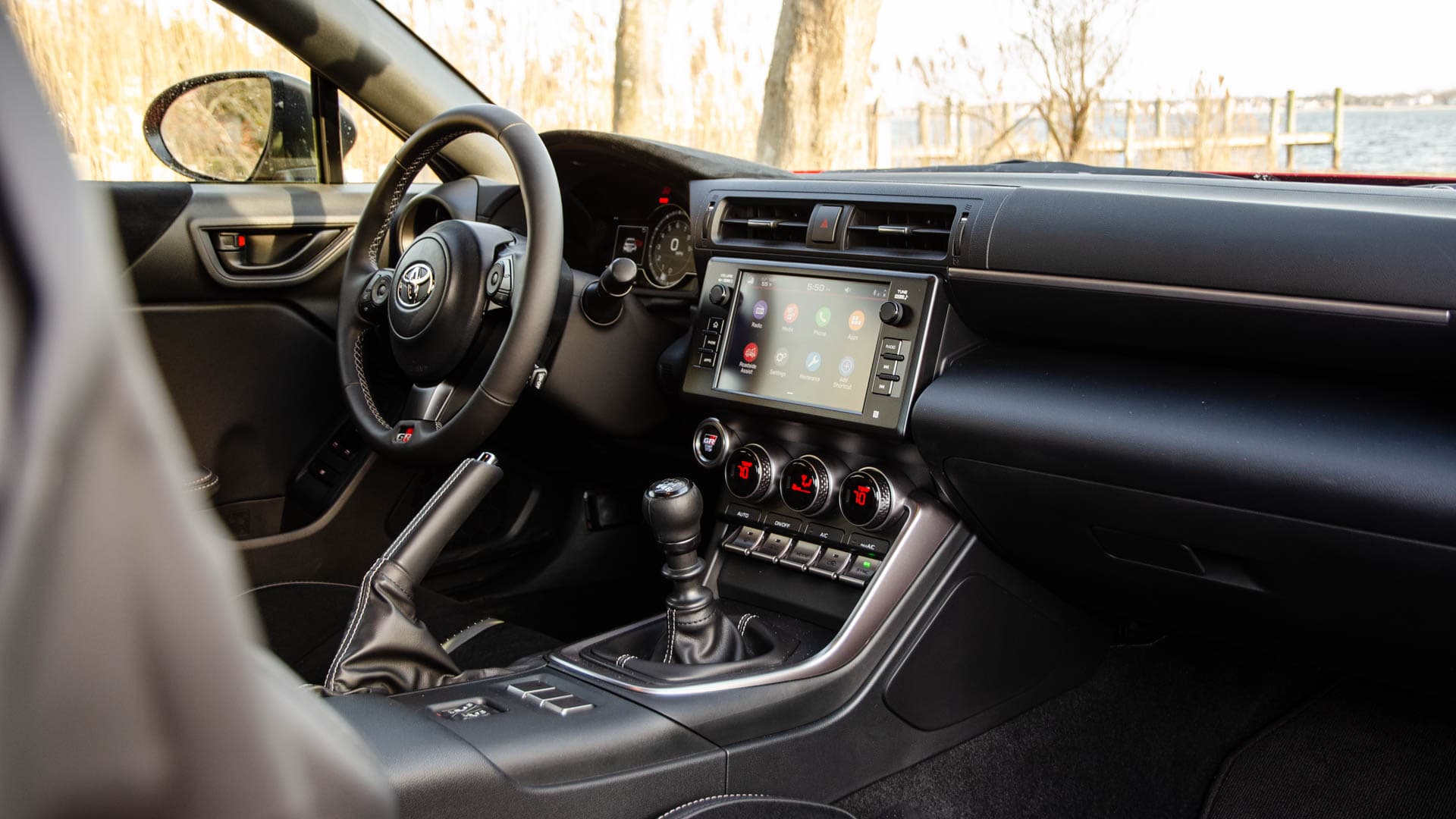I must admit, I was a bit cheeky when I asked Toyota’s press office for the new GR86. I asked to test it mostly because I wanted to drive it, without an exact review angle in mind, and I figured I’d come up with something along the way. I also didn’t feel as though any BMW customer would ever cross-shop it, which is typically why we arrange non-BMW test cars. However, I’m here to say that BMW customers absolutely should cross-shop it because the new 2022 Toyota GR86 is one of the most fun cars I’ve driven in years.
Toyota – Subaru Collaboration
This new generation of Toyota GR86 replaces the old GT86, however it’s still a very similar car to its predecessor. The chassis is mostly the same and it’s still built by Subaru, with Toyota being part of the development process. BMW fans have heard that before, as the same thing happened with the BMW Z4/Toyota Supra; Toyota helped with the design and development of the chassis but BMW did most of the heavy lifting.
Despite similarities with its predecessor’s chassis, Toyota improved upon it. It’s received quite a bit of structural bracing, both at the front and rear ends, which has made an already great rear-drive platform even better. However, what Toyota (and Subaru) wanted to improve most was its engine, power output, power delivery, ride comfort, and noise. And it’s done all of that, creating a total package that might be the best overall sports car package for under $50,000.
Fully Loaded Premium Model
My test car was a 2022 Toyota GR86 Premium, which is fully-loaded right out of the box. The only options available at that point are accessories, like all-weather floor mats and wheel locks. Being a Premium model, the main upgrades are upgraded heated sport seats, 18″ black alloy wheels, LED headlights, a body colored rear spoiler, and a couple of extra speakers. However, there’s one main difference between the upgraded Premium model and the base model and it monumentally changes the car’s character — tires.
The base model comes with Michelin Primacy tires which are intentionally pretty low-grip, low rolling-resistance tires and give the GR86 its signature tail-happy dynamics. However, the Premium model comes with Michelin PS4S tires, which provide much more grip and make sliding it around far more deliberate.
There’s a common sentiment among car enthusiasts that says the base model is better, for its more hooligan-like behavior, but that isn’t always the case. Unless you live in California or Utah — or anywhere else that has countless empty, twisty roads to exploit — you’re never going to slide it around in your daily drive. In typical suburbanite America — where I live — I was happy to have the added grip, as I’m not keen on being pulled over by local cops for sliding my car around corners on 35 mph residential roads…
Plus, with under 230 horsepower and a curb weight of around 2,800 lbs, PS4S tires are far grippier than the GR86 needs, which makes it capable of cornering speeds that will genuinely boggle the mind. And it’s not as if you can’t have fun with the PS4S’. Toyota was clever and tuned the rear suspension to reduce a bit of rear end grip, while also giving it a front-heavy weight bias, so even with the ultra-sticky Michelins, fun can be had with traction control off.
A Subaru Engine
Toyota yet again borrowed an engine for a sports car. This time, it’s a Subaru-built 2.4 liter naturally-aspirated boxer-four, with 228 horsepower and just 184 lb-ft of torque. It’s similar to the old model’s 2.0 liter boxer four, which made 200 horsepower, but Subaru and Toyota not only increased its displacement but improved its character dramatically. The previous engine sounded as if a vacuum cleaner sucked up a few bees. Now, it sounds like a chainsaw that runs on liquefied murder hornets.
Under about 3,000 rpm, there’s not much pull — although the throttle tip-in is so sharp and response is so immediate that I often spun its rear wheels unintentionally from a stop — nor is there much noise. Above 3,000 rpm, though, it pulls surprisingly hard and has a killer soundtrack. According to Toyota, 0-60 mph is about 5.4 seconds, and that’s probably accurate, but the sensation of speed is such that I never cared how fast it was. The little boxer-four is smooth, punchy, and more than happy to rev to its 7,000 rpm redline.
Manuals Live On
More importantly, my test car was paired to a six-speed manual transmission. A six-speed auto is available but, honestly, unless you lack a left leg, get the manual. Even if you don’t know how to drive stick, learn. The manual in the GR86 is up there with the best I’ve ever used and arguably better than some manuals BMW puts out. The clutch is light but its engagement point is clear, rather than the overly springy, vague clutch in the new M3. Shift throws are superb; tight, just the right length, and with very crisp gates.
Gearing is admittedly a bit too short — unless you want to rev the nuts off it in a school zone, you’re into third gear by 25 mph — but that’s fine because it means more shifting. Thankfully, sixth is rather tall, which means highway cruising isn’t as bad as it is in a manual BMW M3.
Great Steering Input
Steering is superb. It’s a bit light but weight builds up beautifully off-center, with good on-center feel, and a surprising amount of feedback. The front end also grips incredibly well. Thank those sticky Michelins and a front-heavy weight bias for that. Toyota also nailed the seating position; it’s nice and low but even in its lowest setting I could see the front fender haunches over the dashboard, giving it an almost Porsche 911-like view out. That helps place the car exactly where you want and provides a lovely sense of confidence.
Better than the steering, though, is its chassis balance. It’s so playful and responsive to the inputs of your right foot. You can easily steer it on throttle and make all sorts of micro adjustments mid-corner. And because it’s relatively low on power, and naturally-aspirated, the torque never hits you like a sledgehammer, causing the chassis to do something unexpected. The stakes are low and the fun is high, exactly the way a good sports car should be. It’s honestly the most playful car I’ve driven since the original Mini a few years back.
That low ride height and seating position does make it feel as if you’re sitting on a skateboard though, which I love but some BMW owners might find un-premium. That combined with its relatively firm suspension can make it feel a bit bouncy. If there was a singly complaint with its handling, it’s that it gets a bit skittery over rough pavement. Though, I wouldn’t upgrade its suspension for fear it would disturb its near-perfect handling balance. I can live with bouncy if it delivers in every other way and the GR86 does.
Sports Car Looks
I also really love the way it looks. It’s compact but its long hood, short rear deck, and low roofline give it classic sports car looks. I love its muscularity and how its 18″ black wheels fill its wheel arches perfectly. My test car wore a shade of red called “Race Bred” (get it, race “bRED”) and it’s lovely. There’s only one choice of interior, a black leather/fabric setup with contrast red stitching. In terms of design and ergonomics, it’s mostly great.
The steering wheel is lovely, seats are superb, outward visibility is mostly good, and everything is easy to use. If I had any gripes with the cabin, it’s be the lack of storage; there’s literally nowhere to put a pair of sunglasses and the only spot for a phone is in the center console cubby, which is behind the driver’s elbow and annoying to use. Plus, without wireless Apple CarPlay or Android Auto, you need to put your phone somewhere when it’s plugged in and there’s no good spot.
Like most small coupes, the back seats are more theoretical than anything else. I had to take my four year old son to school in the Toyota GR86, which meant I had to bring my four month old son along and, with two car seats in the back, the steering wheel was close to sawing my manhood off. It wasn’t great. But that’s not a huge concern, as you don’t judge a fish by its ability to climb a tree.
Less Premium Materials
Some materials can also feel a bit cheap, such as scratchy lower door bins and center console plastics. Though, I couldn’t have cared less during my week with it because I was having too much fun. If you’re behind the wheel of a GR86, you’re focused on the fun of driving, not the plastics on its lower door bins.
Will any BMW customers ever cross-shop a Toyota GR86? Almost certainly not because most BMW customers buy the cars because of the brand, badge and premium features/materials.
If there’s a BMW model to cross-shop the GR86 with, it’d be the base model BMW 230i, which is also a small, two-door, rear-wheel drive coupe with a four-cylinder engine. There are some major differences between the two cars; the 230i is turbocharged, automatic-only, filled with leather and premium materials, and about 600 lbs heavier. But, essentially, both are small, rear-wheel drive sport coupes.
Conclusion
I haven’t driven the BMW 230i just yet but I have driven the BMW M240i. The latter is a great overall premium performance coupe and certainly better to live with on a regular basis. But I can say, without a shadow of a doubt, that if I were handed the keys to both cars for a drive down a twisty road, I’d never even glance at the Bimmer’s key. The Toyota GR86 is that much sweeter to drive. At least until I get to drive the more analog BMW 230i Coupe.
If you’re in the market for a BMW 2 Series of any kind and don’t need to use the back seat often (and let’s face it, the 2 Series’ back seat isn’t great either), I would seriously recommend putting badge snobbery aside and take a look at the GR86. The last two cars to surprise me this much were the BMW M3 Competition and the C8 Corvette. It’s on that level. Toyota, I have no notes. Great job.




